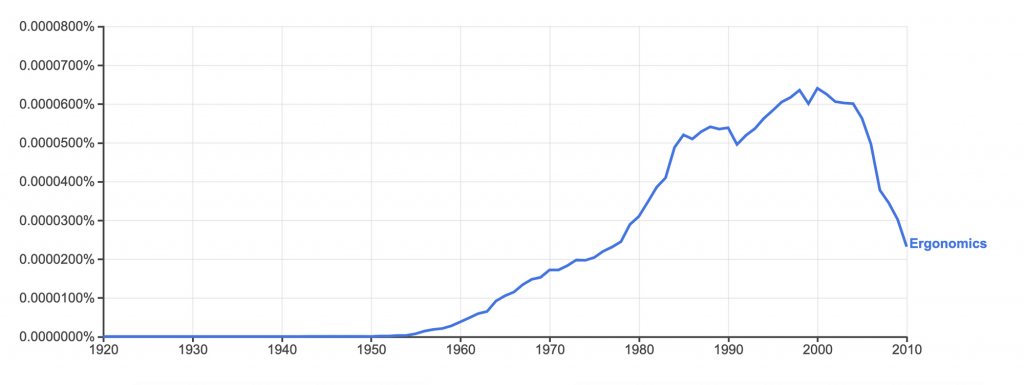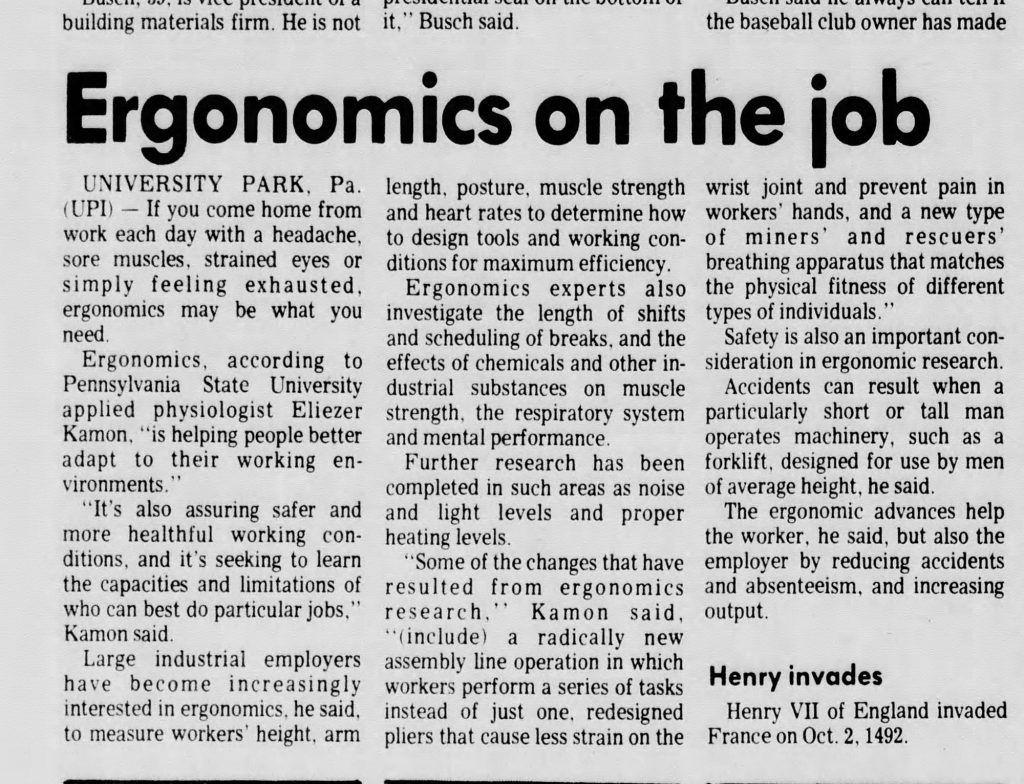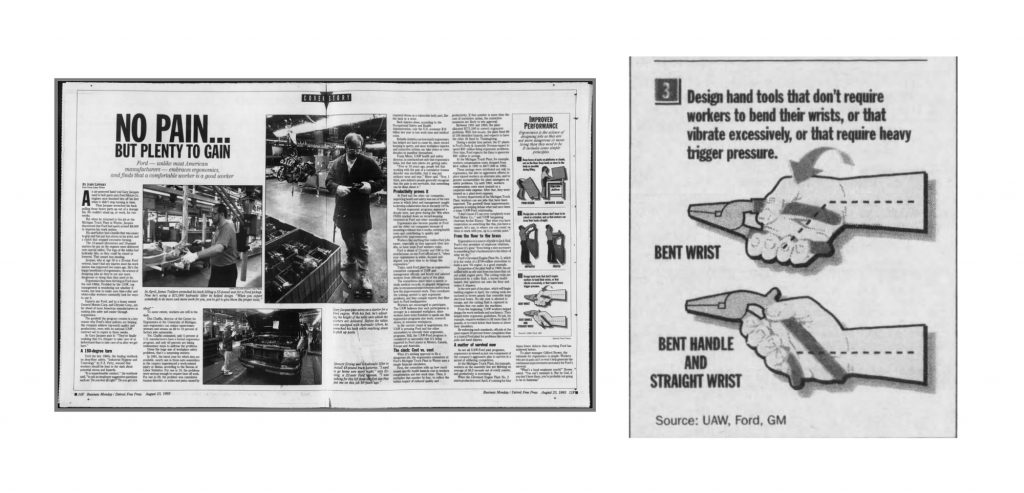Today, we have a lot of examples that clearly prove the importance of good UX. Some of these include historical pieces of evidence that show the advantages of usability.
The Origin of Ergonomics
The ancestor of UX design is ergonomics. This notion originated sometime around 1960. Ergonomics has been an important part of the design process and takes part in task, product, environment, and work assessments.

Word ergonomics mentioned in books by ngrams
At first, ergonomics was only applied to furniture production and not considered useful for other businesses. But gradually it became evident that it was highly crucial for aviation, where any mistake could cost hundreds or even thousands of lives. Seat belts and additional extra brake lights are security equipment created with the help of ergonomics.
In 1976, the book “Pilot error” by Hurst came out, which explained the necessity of usability in this field. Ergonomics has many advantages for both employers and employees. It improves productivity, reduces the number of accidents, and positively affects the workflow. But the main objective of ergonomics has always been safety and security.
Eventually, after more and more experts started talking about ergonomics, companies started listening. It helped them to improve their products and make the workplaces more comfortable.
For example, in 1993, “Detroit Free Press” published an article where representatives of Ford explained the importance of ergonomics, which they used in the development of their cars, and advised other car manufacturing companies to do the same.
Source: New Castle News May 11, 1978. newspapers.com
All in all, it took more than 30 years for people to understand how ergonomics can change their lives, even though it seems obvious now. Workers can have safer workplaces. Companies can produce better quality products. Businesses can start increasing profits more efficiently.
Modern Times
How does this apply to modern times? Nowadays, designers always try to create a product that is as user-friendly as possible. The analysis shows that user-research based digital product design helps save money and increase productivity – as proven by Nngroup, Google HCI, and other reports.
Usability improvement requires long-lasting research and user monitoring, since we can’t provide a good user experience without thorough observation. Every company needs to invest in UX design if it wants to satisfy even the most demanding clients.
Aren’t these arguments good enough to invest and support research in this sphere?








